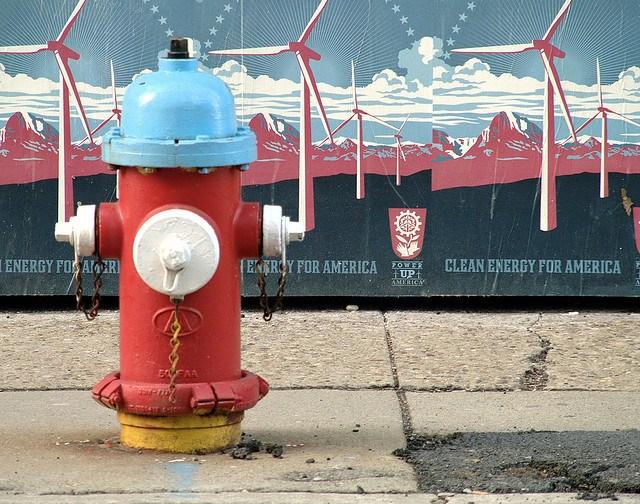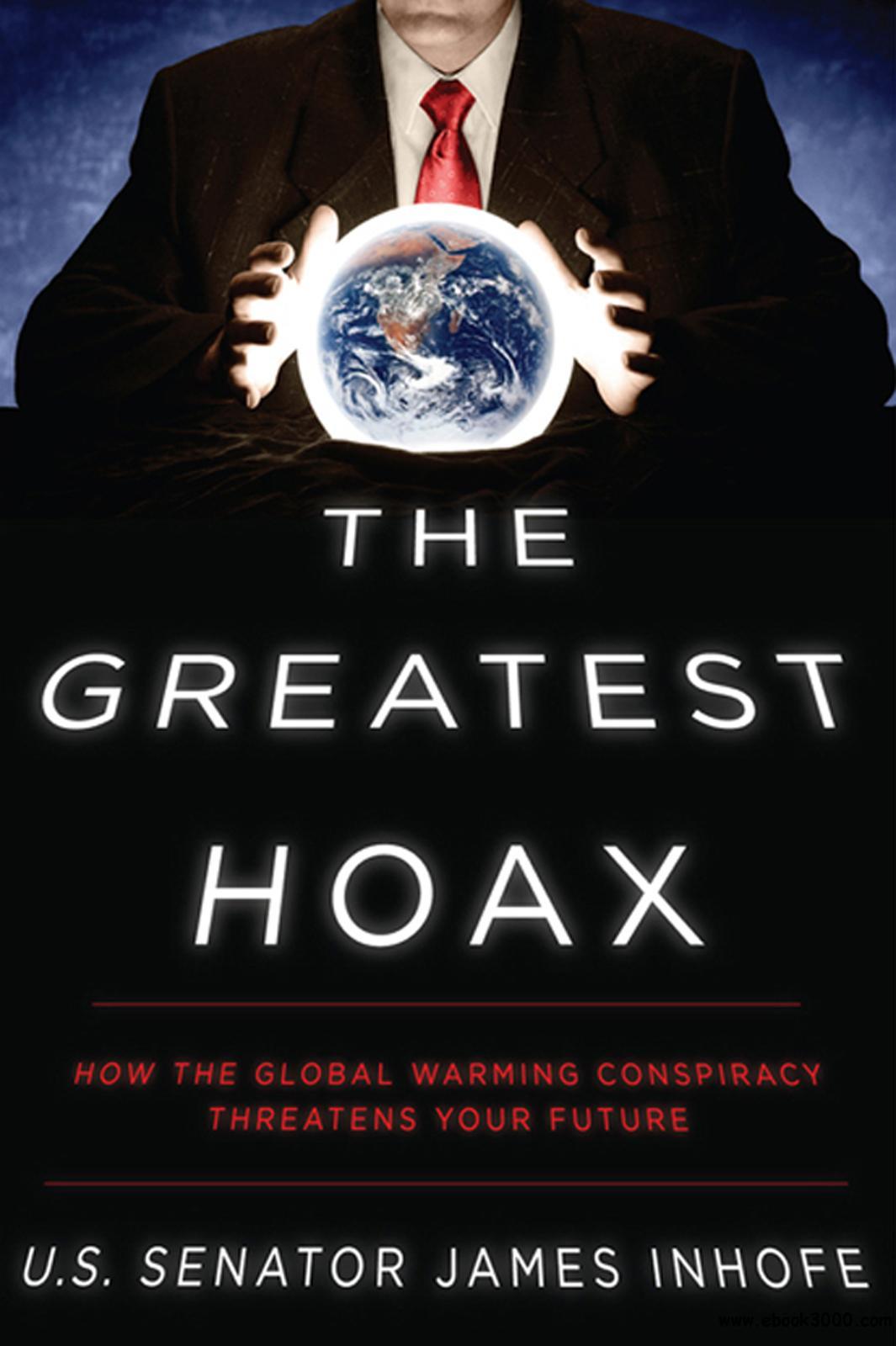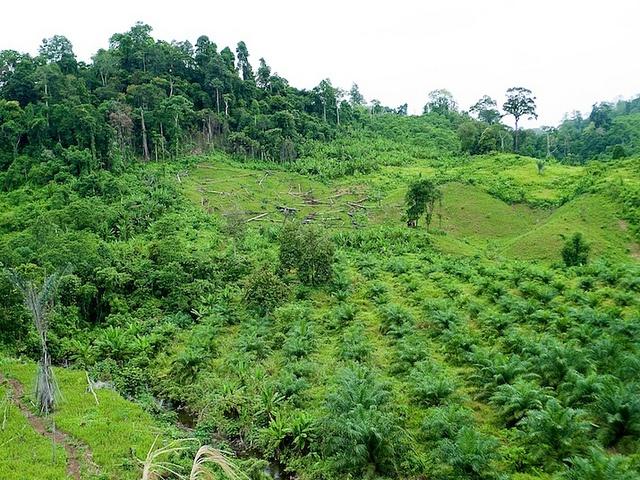Heaton and Abbott in tune with GMB’s Living Wage campaign


Musicians Paul Heaton and Jacqui Abbott are backing the GMB living wage campaign protesting against fashion retailer Next's employment practices.
The singers will be protesting alongside union members outside various Next stores during the course of their UK tour (21 November-10 December 2014).
GMB is calling on Next to pay wages and enough hours of work for people to live on. As a first step, it is calling for £7.85 per hour and £9.20 per hour in London as a move towards the £10 per hour set by GMB Congress. Next employs 50,000 workers at over 500 stores, call centres and warehouses in the UK and Ireland.
Paul Heaton commented: "We're proud to support the GMB campaign to give people a living wage. Times are really hard for working people at the moment and as both Jacqui and I started our working lives in poorly paid and undervalued jobs, this campaign is particularly important to us.
"There are people in employment, working for companies that still make massive profits in these so called times of austerity and they're not receiving a fair or decent wage.
"The GMB campaign is only asking that working people get a living wage in return for their labour. This seems a fair and reasonable request to make to all employers."
Material on Next employment practices will be given to concert goers at all 15 shows.
Scottish Leather Group recognised for environmental good practice


At this week’s Energy Institute Awards, the Environmental Award went to Scottish Leather Group for its low carbon leather production.
Scottish Leather Group secured the award against some stiff competition including Sindicatum Sustainable Resources for its RenewCo projects, SWRP for the Subsea Well Response project and Vital Efficienci for energy savings and ISO 50001 certification at Cancer Research UK’s research laboratory.
Lynda Armstrong OBE FEI, chair of British Safety Council and formerly of Royal Dutch Shell, chaired this year’s E Awards judging panel which included representatives from across all sectors of the energy industry.
Armstrong commented: “The EI Awards are a great opportunity to showcase and celebrate the diversity of innovation and excellence in the sector. This year was no exception; we reviewed a large number of applications across the whole spectrum of activities. All of the projects showed the effort in progress to maintain an efficient and dynamic energy industry.”
A Black Friday 2014 Call to Action: Durability Over Discounts?


Do a search for “Black Friday 2014” in your favorite search engine, and chances are you will come up with similar results to what I found. First, of course, a site called TheBlackFriday.com, which serves as a clearing house on advertisements and hours. Not surprisingly, WalMart and Amazon, the largest brick-and-mortar and online retailers in the U.S., rank highly in the search results. Depending on your stance on Black Friday, the thought of this day either brings angst over massive conspicuous consumption or excitement over cheap laptops, toys and clothing.
Not surprisingly, Black Friday is starting earlier every year. WalMart has already announced that it has started to spread Black Friday cheer with discounts on thousands of items as of Nov. 1. Perhaps the Black Friday label is already outdated. Kmart, for example, has announced it will open its stores on Thanksgiving morning at 6:00 a.m., which I suppose makes sense if you want to shop and then cook and nosh on your turkey dinner afterwards.
For those of us who want to do something other than wait in lines in pitch darkness for that cheap item made in a dubious factory overseas, what alternatives have we got? Two years ago I spent Black Friday in thrift stores to make my own political statement; others, including 3p’s founder, suggest patronizing organizations and companies that offer a more sustainable alternative to what often comes across as a crass marketing day that cheapens the meaning of what was once a religious and family-oriented holiday.
On the flip side, Black Friday does have appeal — the crowds and bustle during a late fall day, whether you are walking in and out of stores in a big city shopping district, small town square, or yes, that local mall. And there is the satisfaction in finding that special gift for a loved one. But instead of focusing on the discount, consider taking a different tone: take a stand on buying something that is durable and long-lasting, while having a role in supporting young, local or more socially responsible companies.
Many commentators have made the case for buying with an emphasis on quality over quantity, from clothing to cooking gadgets. Plus it does not take much research to find that many of the items hyped for Black Friday, such as electronics, may look attractive from a spending perspective, but most likely will be of an inferior quality. Plenty of opportunities to make socially responsible shopping decisions, as well as take a stand for quality and durability, exist online and in the brick-and-mortar world.
For those who seek creative gifts but do not know where to start, Etsy is one launch-pad to search for that quirky yet quality gift. At press time, this online artisan marketplace offered a bevy of holiday specials, from vegan soaps, to handcrafted jewelry, to brightly-colored plush toys. Of course, plenty of silkscreen artists have jumped into the fray, selling T-shirts that mock Black Friday — and celebrate the holiday silliness as well. It’s clear you do not have to be a quantitative marketing analyst at Best Buy or a Target to take on the challenges of Black Friday; many artists and designers are joining the fray as well, and are having fun doing it.
Is it even worth it for a small company to sell on Black Friday? I recently got back in touch with Ben Moran of Osmium, a Massachusetts-based clothing firm that specializes in classic designs made with high-quality textiles and manufactured in the U.S.
“Our experiences with Black Friday have always been bittersweet,” said Ben Moran, an Osmium employee who handles the company’s marketing and sales operations. “Sales have always been great that week, but they have left us with a ‘bad taste’ in our mouths.”
Over the past three years, Osmium has offered discounts on their website during the weekend linking Black Friday and Cyber Monday. “We are a brand that cares deeply about purchasing durable, quality goods, and trying to limit the negative impact [that] over-consumerism has on our environment,” said Moran. This year, Osmium will take a different approach to its annual Black Friday Sale. The company will offer 20 percent discount to all customers, and in turn will donate 20 percent of its Web sales to the environmental nonprofit 1% for the Planet. The company is calling the sale “20/20 Vision,” and it will last from Nov. 28 to Dec. 1.
Furthermore, in a repudiation of the outlet store craze (Buzzfeed’s take is only the tip of why outlets are a marginal place to buy goods), Osmium also sells what it describes as “Bin Ends.” These bargains, often slashed by 50 percent, are prototypes and samples that the company needs to clear out of its warehouse — but also offer those on a budget a chance to buy unique clothing items not found anywhere else.
Teel Lidow, the founder of merino wool sweater-maker Boerum Apparel, urges consumers to consider buying from local and smaller manufacturers because they will get a better product that will be around for years, if not decades. Consumers need to remember that stores are still making huge profits on the discounted goods they sell on Black Friday. "That means that the $20 button-down shirt that looks like a great steal was actually made for something like $6 or $7," said Lidow, "and you can't make a good button-down shirt for $7. The low cost of production that underlies these Black Friday steals should signal to consumers that they were made with cheap materials and extremely low-cost labor, resulting in low-quality look, feel and durability, and all sorts of environmental and social issues."
To that end, you can extend your socially conscious shopping beyond Black Friday and Cyber Monday. Consider Fair Tuesday, an ethical shopping movement that embraces fair trade, social change and, as a result, better quality goods that will last beyond many future Black Fridays. One Fair Tuesday participant in the past has been Mata Traders, which works with cooperatives around the globe to market clothing and home décor that in turn help artisans earn a living wage.
Whether your passion is workers’ rights or the environment, the end result is the same: the purchase of a higher-quality product that will last far longer than what is available at the big box retailers. The craze for discounts may give us a short-term lift to our wallets, but buying something made fairly and ethically will not only endure in our homes longer, but will leave more of a positive impact in communities near and afar.
Image credit: DC USA
Our Moonshot: NRG's Path To a Clean Energy Future


By Leah Seligmann
Today, NRG announced a goal to reduce our carbon footprint 50 percent by 2030*, on a path to a 90 percent absolute reduction by 2050 while continuing to significantly grow our business.
This goal might not seem revolutionary at first glance — just one more metric in a sea of corporate sustainability targets. But this is an important inflection point in the fight against climate change — not just for NRG, but for the entire energy industry and beyond.
Today marks the first time that a major electricity generator (we’re the second largest in the U.S.) and by extension one of the largest emitters of CO2, has voluntarily put dates around the transition to a low-carbon economy. To put this in perspective, our goals will avoid approximately 3 billion tons of CO2 emissions. This is equivalent to avoiding the deforestation of 18,000 square miles of Amazon rain forest (roughly the land mass of Vermont and New Hampshire combined).
These are big numbers, but in reality they are a small part of the larger picture. Climate change is a global issue, and its solution will require global action. NRG’s projected 2014 emissions of 125 million metric tons of CO2** represent less than 1 percent of the global total. NRG cannot solve climate change alone, but as a company with investments across the industry, we can begin to chart a path to the clean energy future.
One of the reasons our goal is significant is that we are not waiting for someone to tell us to change. We are challenging ourselves to be a model for the industry, so that together we can transform our carbon-intensive economy into a system based on clean, renewable power — one that delivers shareholder value without compromising the delicate ecosystems upon which we depend. Public goals enable external stakeholders to measure our progress, but they also provide our managers with clear targets toward which to innovate.
While disruptive, these goals are also achievable. We did not create this goal detached from the reality of our business and the system in which we operate. In fact, we have been laying the groundwork for years with significant investments in cleaning up our fleet like Petra Nova, the largest carbon capture project on an existing plant in the U.S.; growing our consumer and business renewables; and developing the largest network of electric vehicle charging stations. We have accomplished all of this while reducing the carbon footprint of our fleet by 40 percent below 2005 levels.
Achieving our goal will require sustained collaboration from all 10,000 of our employees, as well as regulators, policymakers, customers, shareholders and a host of other unconventional partners. This is a big problem, and at the end of the day, our action is just a start. Success against climate change requires massive collaboration across all levels. We need every individual, every business and every level of government to take steps to reduce their footprints.
In support of these long-term goals, we also broke ground on our new headquarters. The three-floor, 130,000-square-foot building will have two on-site solar fields, high-efficiency LED lighting, rainwater capture cisterns and space for more than 50 electric vehicle charging options. Grid electricity — to the extent that we use it — will be 100 percent renewable from NRG Home.
Our request is simple: Join us. Look inside your sphere of influence and find a way to reduce your impact. The time to act is now.
*Below a 2014 baseline
**Projected estimate will update with final baseline in 2014 10K
Leah Seligmann is the Chief Sustainability Officer of NRG Energy
State Mandates for Clean Energy Improving But Not Fast Enough


In June of this year, the Obama administration announced new carbon standards for power plants. With the comment period for the proposed rules expected to close on December 1*, we thought we would take a look at how states are doing.
The innovative aspect of this plan is that it is tailored to the carbon emissions of each state through a progressive transition to renewable energy. So Illinois, for example, has a recommended goal of a 9 percent transition to renewable energy sources by 2030 (established by the Environmental Protection Agency). The state, however, has set its own goal of 25 percent renewables by 2026. Pennsylvania has set its goals above those of the EPA at 18 percent and 16 percent respectively, but the state is still struggling to cut its dependence on coal (39 percent of its power generation). California is aiming for a 33 percent benchmark by 2020; the EPA, however, set the bar at 21 percent by 2030.
Needless to say, not all states are making inroads as aggressively as California, which has its own clean energy initiatives already in the works. It trumps most states in its accomplishments right now, not only because of its proactive stance on renewable energy, but also because it has the resources at hand. Although a whopping 60 percent of its energy comes from gas, at least 14 percent comes from hydroelectric power and 4.9 percent from wind. Its solar is still fairly small (only 0.70 percent) but is liable to grow in coming years.
Then, there are those states that to date have not set goals. Alabama, Arkansas, Florida, Georgia and Kentucky are among the states that seem unmoved by the clean energy initiative. Ironically, many of them bask in a plethora of sunlight or have great access to wind energy. Florida, the Sunshine State, also has coastlines that most wind energy cooperatives would die for (seasonal hurricane concerns notwithstanding).
According to Earth Justice, which put together an infographic of individual states' clean energy progress, only seven states are ahead of the proposed goals. Fortunately, the bulk of the states have adopted mandates and are making strides. Still, with more than 20 percent of states failing to set individual mandates, one has to wonder why the imperative of clean energy isn't being heard.
Are the goals too low? Florida, with its abundant options, is only being encouraged to attain a benchmark of a 10 percent transition to renewable energy sources by 2030. Arkansas' goal is even lower: 7 percent. Of course, the entrenched supply of non-renewable sources such as coal in states like Alabama, which gets 30 percent of its power from dirty sources, plays a role in whether states either have the incentive or the ability to make such a leap. And its landmark suit against the EPA for the new standards sets the scoreboard when it comes to the likelihood of the state meeting the 2030 EPA standards after they are finalized in June 2015.
North Carolina, another state known for its use of coal power (which represents 44 percent of its power generation), did set its own goal -- coming out just above the EPA's proposed minimum of 10 percent. That is in part because of locally-based environmental organizations like the NC Clean Energy Technology Center that can offer incentives and a push-back to organizations like the American Legislative Exchange Council, which lobbies support for coal interests.
Clearly the issue isn't entirely partisan politics. Alaska was handed a recommended goal of 2 percent by 2030, and has set its own threshold at 50 percent by 2025. Again resources play into the picture: Alaska's ample access to water bolsters its hydroelectric generation, which stands at 23 percent. But the benchmark that has been set by this generally Republican-leaning state is still not binding.
It will be interesting to see how the states' mandates shake out as the 2016 deadlines get closer and climate change issues become an even greater topic for debate in state capitols.
*Please see EPA: How to comment on the proposed rule
Solar panels, Bethell AK: Andrea Pokrzywinski
Hydrant/Clean energy depiction, Pittsburg PA: Tacomabibelot
On Climate Change, Who’s Hoaxing Who?


With Sen. James Inhofe (R-Okla.) at the controls of the Senate Environment and Public Works Committee over the next two years, climate change will enter into an even more annoying, frightening and bizarrely hilarious era.
For the uninitiated, here are some quotations from the most aggressive climate change denier in the Senate:
- “Climate change isn’t real because the Bible says it ain’t.”
- "My point is, God’s still up there. The arrogance of people to think that we, human beings, would be able to change what He is doing in the climate is to me outrageous."
- He claimed that global warming might help humanity. “It's also important to question whether global warming is even a problem for human existence. Thus far no one has seriously demonstrated any scientific proof that increased global temperatures would lead to the catastrophes predicted by alarmists. In fact, it appears that just the opposite is true: that increases in global temperatures may have a beneficial effect on how we live our lives.”
- On the International Panel on Climate Change's Synthesis Report released last week, he said:
“The idea that our advanced industrialized economy would ever have zero carbon emissions is beyond extreme and further proof that the IPCC is nothing more than a front for the environmental left. It comes as no surprise that the IPCC is again advocating for the implementation of extreme climate change regulations that will cripple the global economy and send energy prices skyrocketing. The United States is in the midst of an energy renaissance that has the potential to bring about American energy independence, which would strengthen our national security and energy reliability for generations into the future. At a time of economic instability and increased threats to American interests, the IPCC’s report is little more than high hopes from the environmental left.”
For anyone still uncertain about where he stands, Inhofe laid out his positions in his 2012 book, "The Greatest Hoax: How the Global Warming Conspiracy Threatens Your Future."
Okay, so he’s a whacko, but unfortunately the rare breed of whacko that can’t be ignored or laughed off the stage. He’s the bane of every scientist who dares to uphold a century’s worth of climate measurements against the word of God.
And he chairs the Senate panel on the environment!
If one repeats absurdity often enough — as in most of the Republican talking points about almost anything, in my opinion—they take hold in the national psyche, or at least in what people talk about and then must spend precious time refuting. From a marketing standpoint it’s brilliant. As Benny Thomas writes in a recent MediaPost article: “Even the most absurd ideas can take off when marketed well.”
Thomas continues that it’s time for counter-measures: “Because make no mistake, it’s game time for climate change activists. Time to step up to the plate and fight for the truth. Most importantly, find new ways to fight. The old ones aren’t working as well as they need to.”
Thomas suggests:
- Stop being so alarmist and be a little more entertaining. “Whoever said ‘fight fire with fire’ clearly did not understand physics. You fight fire with water: and nothing douses inflammatory rhetoric faster than a splash of satire.”
- Simplify the message. “How about a simple chart that shows the accelerated pace of oceans rising, glaciers melting and coastlines disappearing?
- Find a way to stay top of mind. “Scientists have posited that if average surface temperatures rise by 2 degrees Celsius, the effects are irreversible. How about a ‘heat clock’ that shows how close we are getting to that and what the effects are?”
Let’s take a page from the Inhofe and the climate-denier playbook by being insightful, passionate and singular — to use three words beloved by the advertising community — and focus the conspiracy/hoax lens on the activities of the “dark side.”
Image credit: Cover from Inhofe’s Greatest Hoax.
What It Takes to Change the Way the World Eats for the Better


By Deanna Bratter
What is the recipe for achieving success when it comes to sustainability? While it’s not one-size-fits-all, there are often certain ingredients that can help on your journey towards sustainability: a culture of engagement, mixed with a willingness to take big leaps; a passion for innovation; a willingness to be transparent; and a commitment to continuous improvement. Sustainability requires a holistic and multifaceted approach, one that not only focuses on reducing your impact on the planet and social responsibility, but one that goes even further toward innovative, closed-loop and restorative practices.
I say this as someone who’s part of a company with the very ambitious mission of changing the way the world eats for the better. WhiteWave Foods is the world’s largest organic food company, and our products are an important part of sustainable food trends such as plant-based beverages, organic dairy and organic produce. You might know our Silk plant-based foods and beverages, SoDelicious Dairy Free frozen desserts, Horizon dairy products and Earthbound Farms produce.
Working toward a mission of changing the way the world eats requires a strong, embedded, long-term commitment to sustainability. Over my nearly 10 years at WhiteWave Foods, I’ve seen the company grow exponentially and face the challenges that came along with trying to bring to life that mission and our vision of sustainability and transparency, to reduce our environmental footprint, and to improve our packaging and responsible sourcing programs while managing tremendous growth. Trust me, it hasn’t always been easy, but we’ve always remained committed. I’m proud to say we offset 100 percent of the water used to manufacture Silk plant-based beverages at company-owned facilities. We’ve also redesigned all of our gable-top cartons to use 33 percent less material, resulting in 920,000 pounds of resin saved in 2013. We also work with the Carton Council to increase carton recycling access year-over-year, and reached a momentous 50 percent access milestone this summer.
So, what key learnings can I share that I think have impacted our sustainability story?
Integrate sustainability into core practices
First, we’ve worked incredibly hard to make sustainability and responsibly-produced food a part of who we are at WhiteWave. It’s woven into our mission, our vision, our values and our people. It’s a core component of our strategy and, ultimately, we want sustainability to be a part of every employee’s job description. We endeavor to create a culture of caring that fosters the engagement and passion we need to help us deliver on our sustainability goals. Such integration of sustainability is crucial to success.
Set attainable goals
Second, we set goals. It’s imperative to start with goals based on a solid foundation of data, which are attainable and pertinent to your specific business. I recommend identifying and understanding what is of material importance and where you have a true potential to make the impacts you are after. It’s also important to tie sustainability goals into realistic financial and business scenarios. Building a strong business case for sustainability programs and projects with strong economic, environmental and social return on investment has been an important component to our success.
In 2006 and 2007, we established a series of internal sustainability targets aimed at reducing our environmental impacts, while at the same time growing production volumes. Most material to our footprint are: energy use, greenhouse gas emissions, water consumption, solid waste to landfill and finished product transportation.
Since 2006, we reduced our greenhouse gas emissions by 32 percent, per gallon of product; reduced our waste to landfill by 28 percent per gallon; and reduced our non-ingredient water usage by 6 percent per gallon. Our reductions were largely driven by enhanced efficiency in our manufacturing processes, supported by strong education and engagement programs with employees.
Be transparent
My third piece of insight: Be transparent. Despite our successes, there are still areas where we need improvement, and it’s important to be transparent about that. The same is true for any company seeking to improve sustainability.
In particular, water is a challenging area for us. While we are proud of our reductions to date, changes in our product offerings and added complexity to our manufacturing added hurdles to tackle and an opportunity to further transform our water usage.
This year, to further our efforts in transparency, we produced our first Corporate Social Responsibility (CSR) Report. CSR reporting brings with it many benefits. It acts as a tool that can help drive clarity, alignment, process efficiency, excitement and pride around the programs within your organization, while also promoting conversation and collaboration with internal and external stakeholders. Not to mention, it can also help attract high-quality talent to your company – people who share your passion and vision.
At WhiteWave, we have learned a lot about how to manage rapid growth while staying focused on sustainability. Along the way, we’ve taken some chances, and we’ve never stopped looking for creative solutions and innovative technologies that help us do our part in caring for people and the planet while making products people love.
Our journey continues, and we invite you to connect with us on Facebook and Twitter. Here’s to a more sustainable food future!
Image credit: Flickr/kubina
Deanna Bratter is Sr. Sustainability Manager at WhiteWave Foods Company in Colorado, where she directs corporate sustainability strategy, goals and initiatives. She is passionate about transforming organizations and employees into social and environmental sustainability leaders.
Cargill Releases First Palm Oil Progress Report


Cargill Tropical Palm released its first progress report on sustainable palm oil this week. The report, released on Monday, details the company’s plan to achieve a sustainable supply chain.
Part of that plan is its pledge to deforestation-free palm oil, a commitment the company first announced in July. It repeated that pledge at the United Nations Climate Summit in September in New York City. Specifically, Cargill pledged not to develop palm oil on peatland, not to exploit the rights of indigenous people and local communities, and to include smallholders.
At the U.N. Climate Summit, Cargill signed the Indonesian Palm Oil Pledge. Signers of the pledge committed to sustainable practices concerning palm oil. Cargill recently announced that it is on track to trace 80 percent of its palm oil in key markets back to the mills it came from, and that figure will reach 100 percent by December of next year, according to company estimates.
"Sustainability has long been part of our palm plantation culture, and it has resulted in a business that our employees are very proud of," Cargill CEO John Hartmann said in a statement. "We must account for impacts on the environment and local communities for the sake of future generations. That notion is shared by our smallholders. They, too, have achieved multiple global sustainability certifications, and today they are the pride and joy of their communities."
The report also details what the company has already achieved in its quest to create a sustainable palm oil supply chain. In 2009, Cargill’s Hindoli Plantation was certified by the Roundtable on Sustainable Palm Oil (RSPO) -- making it one of the first plantations to gain RSPO certification. The company’s goal is to achieve certification for 100 percent of its plantation and smallholder land. In addition to RSPO certification, Cargill seeks to attain certification under the International Sustainability and Carbon Certification (ISCC) scheme.
In July 2013, Cargill began working with Solidaridad and Wild Asia, two non-governmental organizations, to help independent mills and smallholders achieve RSPO certification in Malaysia. The goal is to help a pilot group of 34 farmers with 133 hectares of palm oil achieve certification -- and then increase the program to include 100 more farmers by the end of 2015.
High carbon stock study
Cargill contracted the Forest Trust (TFT) in December 2013 to conduct an assessment of high carbon stock in 4,320 hectares of palm oil development area owned by PT Sumber Terang Agrolestari (PT STAL) in Indonesia. From December 2013 and July 2014, TFT conducted the study using desk analysis of satellite imagery and three field visits.
After conducting the study, TFT recommended that high carbon stock areas be integrated with peatlands, high conservation value areas and areas of importance to local communities into a conservation and land use plan for PT STAL. TFT recommended that Cargill continue to complete high carbon stock assessments and engage local communities in future high carbon stock assessment processes.
Image credit: CIFOR
Carbon Offsets: Start with the Footprint


As part of our ongoing series on carbon offsets, it’s time to peel back another layer and look at how entities determine exactly what their carbon footprint is, so that they know how much they want to offset, whether it’s for a specific action (like an overseas flight) or an overall operation.
Simply put, carbon emissions generally occur as the result of energy consumption in one form or another. More specifically they emanate from the combustion of fossil fuels, though there are certain industries, like concrete production, that give off CO2 as a byproduct of different kinds of chemical reactions.
Figuring out the carbon emitted by various fuels is straightforward. The Energy Information Administration (EIA) created a chart that provides the number of pounds of CO2 emitted for a variety of common fuels.
So, for example, it tells us that a gallon of gasoline emits 19.6 pounds of carbon dioxide when burned. It doesn’t tell us that, based on each vehicle’s efficiency, the amount of carbon emitted per mile will vary. For example, a Prius will emit 0.39 pounds per mile, while something like a Jeep Grand Cherokee will emit 1.03 pounds per mile. Still, a company that owns a fleet of vehicles can simply add up the amount of fuel purchased, from which the carbon footprint can easily be computed. Diesel fuel emits 22.6 pounds of carbon per gallon. There are other considerations, such as where the gasoline came from, how the oil was extracted and refined and how far it was transported, but these are generally ignored since it would be extremely difficult to track.
Some companies may want to offset the carbon footprint of their supply chains. This could include shipping raw materials and value-add assemblies along the supply chain, or shipping finished products to retailers or directly to consumers. Other companies might offset the footprint of their employees as they commute to work or provide an opportunity for the employees to do so.
Electricity is also difficult to track for similar reasons: Most people today receive electricity from a variety of sources, which could include wind, solar, gas, coal, geothermal, hydro and nuclear. Most utilities will provide an estimate of the mix that they provide -- some in real time and others on a monthly-average basis.
Here are some of the carbon values for various fuels, which can help companies estimate their carbon impact and reduce their footprints. Values per million Btu are included (in parentheses) for comparison purposes.
- Coal: 4,631.5 pounds per short ton (210.2)
- Natural gas: 119.9 pounds per thousand cubic feet (117.0)
- Propane: 12.7 pounds per gallon (139.0)
- Heating oil: 26 pounds per gallon (173.7)
Renewable sources are generally considered zero at the point of use, though there are certain lifecycle emissions associated with their fabrication and construction -- much like those for the transportation and refining of fossil fuels that we mentioned earlier.
Getting more complicated: Diversified grids and server efficiency
The electricity mix is further complicated by the fact that we can’t really trace individual electrons on the grid. So, it’s not possible to know whether, for example, the power that’s lighting up my monitor as I type this is coming from wind, nuclear, coal or natural gas generation. But when a utility buys a certain amount of wind, for example, that wind power goes into the grid somewhere. The person using it may not be the person who paid for it, but it did offset an equal amount of power that would have been produced in a different way.
Similarly, a company could provide offsets for employee travel. Jet fuel emits 21.1 pounds of CO2 per gallon, about midway between gasoline and diesel. A Boeing 747 burns approximately 1.2 gallons of fuel per second, during which time it covers approximately 5 miles. Of course, what an individual’s actual travel footprint will be depends on the type of aircraft flown and how full it was. Based on the numbers I just gave you, if the 747 had 100 passengers on board, it would emit 0.05 pounds per passenger mile -- about as much as eight Priuses or 2o Jeep Grand Cherokees. A Boeing 737 is far more efficient, burning through a gallon of fuel in 4.5 seconds.
Finally, there are servers, which are an increasingly substantial source of energy consumption to any company doing any kind of e-business, whether they do it directly or contract it out.
Figuring out your footprint
The easiest way to figure all this out is to use an online calculator, such as this one from TerraPass that will walk you through calculating your footprint, based on industry standard assumptions.
I checked a couple of different carbon footprint calculators online to see the footprint of a one-way trip from New York City to London. The total distance is 3,443 miles. ClimateCare, a U.K.-based company that offers carbon offsets and calculators, gave a total of 0.77 metric tons, which is equivalent to 1,698 pounds.
TerraPass gave the same answer, provided I selected the 'refractive forcing' option. Refractive forcing is the effect of emitting certain gases and particles at high altitudes, which directly impacts the greenhouse effect, otherwise known as radiative forcing. Without that option, the footprint is only 737 pounds. Clearly, ClimateCare used that option as the default.
I asked Jeremy Richardson, senior energy analyst at the Union of Concerned Scientists (UCS), about the equivalency of buying offsets versus investing directly in the energy efficiency of your own business. While he has no problems whatsoever with buying offsets, as long they are verifiable, he sees a number of advantages in doing what you can in your own facilities first.
For one thing, most investments in energy efficiency will continue to pay back, year after year. You get to see it actually being done, and in some cases experience intangible benefits like a more comfortable workspace. It also provides the opportunity to communicate your values to your customers and employees and perhaps inspire to carry the ball forward in their own worlds.
Image credit: Flickr/pagedooley
RP Siegel, PE, is an author, inventor and consultant. He has written for numerous publications ranging from Huffington Post to Mechanical Engineering. He and Roger Saillant co-wrote the successful eco-thriller Vapor Trails. RP, who is a regular contributor to Triple Pundit and Justmeans, sees it as his mission to help articulate and clarify the problems and challenges confronting our planet at this time, as well as the steadily emerging list of proposed solutions. His uniquely combined engineering and humanities background help to bring both global perspective and analytical detail to bear on the questions at hand.
Follow RP Siegel on Twitter.
U.N. Association Representative: Climate Change and War Are Linked


During the Cold War, when Zuza Bohley was growing up in East Germany, being a pacifist was a crime. It was considered treason.
Treason, as in: Her entire family, made up of politically active pacifists, was subject to surveillance. Their home was watched by the Stasi, the East German secret police. Her father was imprisoned. At age 13, Bohley was taken captive at a friend's birthday party and interrogated for four hours.
"I was terrified to tell anyone," she recounts now. "I was so, so worried that I had said something that would incriminate my family."
A year later, her family was deported from their home at gunpoint and traded to West Germany as political prisoners for cash. (The East German government received 50,000 marks.) "We never asked to leave," she remembers. "We wanted to change things from within."
In West Germany, Bohley was bullied and spit on in school, this time being called "communist," and eventually made her way to the U.S. Now she works for multiple NGOs striving to create peace and sustainability -- focusing on youth, especially from marginalized groups. As regional representative to the United Nations Association for the Rocky Mountain Region, she says that climate change and peace are intertwined.
"Most of the world's wars are fought over resources," Bohley said. "The U.S. involvement in the Middle East is because of oil. The Ukranian crisis ... because of dependence on Russian oil."
This year's Intergovernmental Panel on Climate Change report warned about the probability of climate change-fueled civil wars and inter-group conflict. In the case of Syria, this has already happened.
The 2006-2010 drought in Syria turned 60 percent of Syria's fertile land into desert, displacing more than 1 million farmers, herders and their families. What has happened with the rise of ISIS is "fallout from climate change-produced drought," according to Mario Molina of the Climate Reality Project.
Bohley remembers what her family lived through: her grandparents surviving the horrors of war, hiding Jewish students in their attic; and her grandfather dying after the war ended, shot in the post-war chaos by an American soldier. Her grandmother taught her to forgive.
"People become inhumane at a time of crisis," says Bohley. And this is why climate change is one of the most important (and difficult) of the United Nations' current efforts.
When Bohley presented to the first Colorado Climate Summit last Saturday in Boulder, she told a success story (an unusual event at climate change get-togethers). It was the story of her hometown, Halle-Saale.
“The river that flowed through Halle when I was a child was very toxic and smelled very bad,” she said. “A lot of kids who grew up with me had acne from pollution. The town was black with the smokestacks of the coal industry."
She's been able to go back after the end of the Cold War, and the transformation has been remarkable: There are fish in the river again, and people can bathe here. “It is like going from black-and-white to color,” she described.
The United Nations Association is a national, grassroots group that works with educational institutions and NGOs in the U.S. to support the work of the U.N., including UNESCO and the U.N. Environment Program (UNEP).
Bohley also acts as a bridge internationally, and in Colorado for the many Latino and other international communities, including co-directing the annual Americas Latin Eco-Festival in Boulder.
"The natural world does not stop at national boundaries," Bohley says. "Rivers cross regional and political borders. We all share the same atmosphere."
Image credits: 1) Lee Buchsbaum 2) Flickr/Charles Roffey